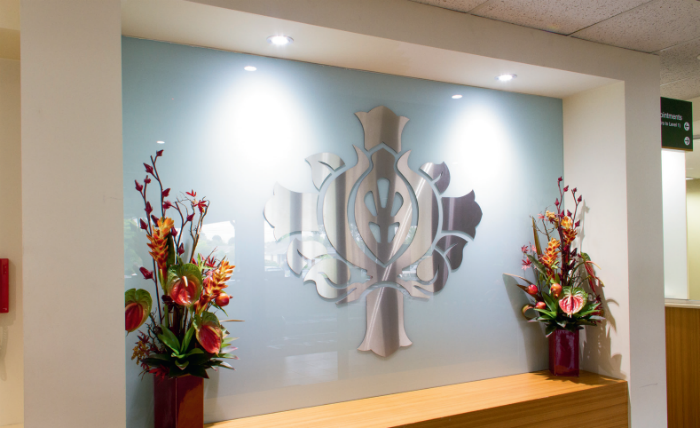
Lighting
LIGHTING UP BENDIGO HOSPITAL
When St John of God Health Care teamed up with SLS to implement a total lighting solution in its hospitals and healthcare centres, no one imagined they would save so much energy by replacing conventional incandescent, halogen and fluorescent lamps with their LED counterparts.
Currently, the facilities at Bendigo, Frankston, Pinelodge and Warrnambool have been completely retrofitted and have shown an average drop in overall energy consumption of 12.53%. This is equivalent to 397 cars, 82 houses or 19,778,195 black balloons. 45,001 trees would need to be planted to offset the same emissions.
St John of God Bendigo Hospital is a 122-bed private hospital for the people of Bendigo and Central Victoria. It has four theatres, one endoscopy suite, a cardiac catheterisation lab and a new critical care/intensive care unit.
The hospital is managed by St John of God Health Care, Australia’s third-largest private hospital operator and fourth-largest provider of pathology services. This not-for-profit group returns all surplus funds to the communities it serves by updating and expanding technology, facilities and services, and providing social outreach and advocacy services to people who are oppressed, materially poor, powerless and disadvantaged.
The group’s latest environmental project focuses on sustainability and the reduction of CO2 emissions at the Bendigo Hospital, which has installed a new lighting solution, customised by Specialised Lighting Solutions (SLS), specifically to meet its needs. The hospital partnered with lighting distributor SLS to supply the project and worked with electrical installers Trivantage. At the helm of the project was Dean Farnsworth, the Group Environmental Engineer for St John of God Health Care, and Paul Stewart, National Business Development Manager at SLS.
SLS supplied a staggering 2661 units of lights from a variety of manufacturers for the job. Fluorescent lights of varying types and halogen globes were replaced with their LED (light emitting diode) alternatives. Aside from the proven energy savings of LEDs, they also have a considerably longer service life.
The Bendigo Hospital is trialling new lights, with some cases showing a reduced power consumption of up to 76% per light fitting. Part of validating the project has been to carefully measure outcomes and the hospital has already reduced overall electricity consumption by 11.13%, which equates to a significant saving in both dollar terms and CO2 emissions. These initial savings are expected to increase over time as electricity prices and CO2 emission charges increase.
“Although the project is nearly complete, we still have a small number of lights to change. Once these final globes are in place, we expect to get close to 12%. Based on the 11.13% figure though, we’ve reduced the annual electricity usage by 264,416 kWh and the CO2 emissions by approximately 322.6 tonnes per annum. At 12%, these figures will only look better again!” said Farnsworth.
Farnsworth explained that selecting SLS came down to multiple factors. “We trialled about seven different suppliers’ lights. While some other manufacturers’ products were very good, we believe that SLS’s products are the best. Aside from product quality, we needed to ensure that our capital investment had the backing of a large organisation and also needed to work with an organisation that could provide extensive product choice, supply and lead times,” he continued.
“One thing that really took me was when I went to SLS; you could see the research they had undertaken for my specific requirements. They were living and breathing lights!” For their commitment to the environment, St John of God was announced as a finalist for the 2012 Victorian Premier’s Sustainability Awards, under the Large Business Category. The new lighting solution was a contributing factor to this impressive nomination.


